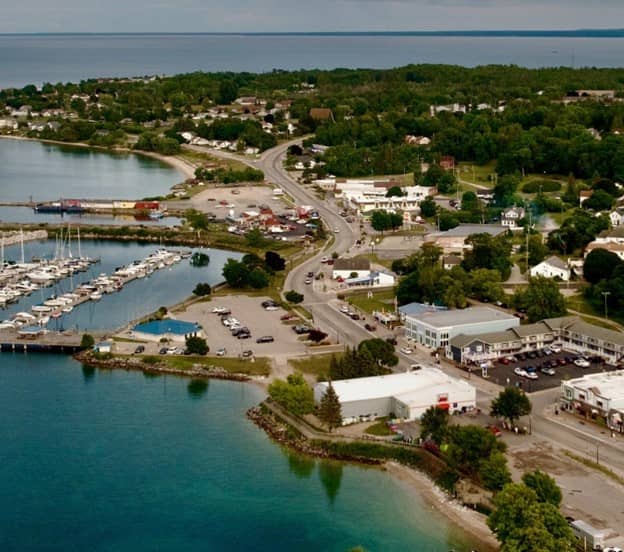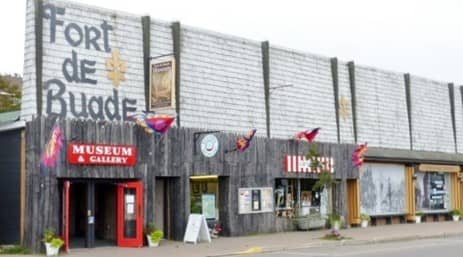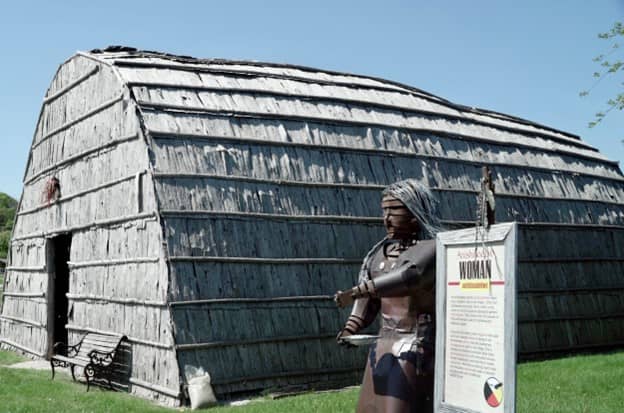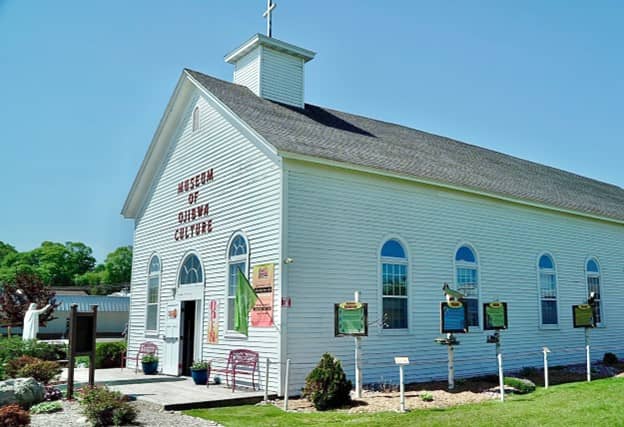
Have you heard the buzz in St. Ignace?
The new Straits Cultural Center will be opening soon, and we couldn’t be more excited. If you’ve strolled around town lately, you might have noticed the action: fencing around the building, delivery of dumpsters, the arrival of the construction trailer – it’s finally happening!
The Straits Cultural Center will be located in the former Walker Furniture Building.
A Look Back: Fond Memories of the Fort de Baude Museum
For many years, I have loved to visit the Fort de Baude Museum, which was located in a rustic building off State Street. Operated by the Michilimackinac Historical Society, the museum got its name from the first French Fort in the Straits region.
I could lose myself in the exhibits and dioramas, always leaving feeling a bit smarter than when I first arrived. If you ever had the chance to explore the extensive collection of over 3,500 historical artifacts, many of which are from the surrounding area, you’ll understand exactly what I’m talking about!

Celebrate St. Ignace’s Unique History at the Bridging History Celebration!
Turning a dream into reality requires community support, and here is your opportunity to help! Save the date, the join us on Wednesday, July 17, 2024, for the 2024 Bridging History Celebration, a fundraiser at the Little Bear East Arena & Community Center that will feature a catered dinner by Vernales Restaurant and live music.
This year’s celebration will honor the Maurer family’s invaluable contributions to local publishing with a Michilimackinac Historical Society Bridge Award for Historical Impact, awarded to those who inspire through a commitment to preserving history, and to ensuring its lessons are accessible to all. It’s an event celebrating the past, present, and future – an experience you won’t want to miss. Have a great time while contributing to the completion of the Straits Cultural Center! Ticket information can be found here.

Even if you can’t make it to St. Ignace for the Bridging History Celebration, there are many ways to help! Check out the link below to find out more!
Help Support the Straits Cultural Center
What is so special about St. Ignace? For history buffs, there is a history lesson lurking around every corner! When you stand on the shores of Lake Huron, and gaze out at the majestic Mackinac Bridge, you will feel a sense of reverence for the past inhabitants who made St. Ignace what it is today.
According to oral tradition and archaeological findings, the Great Lakes Basin has been inhabited for forty to fifty thousand years. The Ojibwa people resided in the area, forming a vital part of the broader Anishinaabeg culture that flourished across present-day Michigan, Wisconsin, Ontario, and Manitoba. Before the arrival of Europeans, the region was home to vibrant communities that adapted to each distinct season to cultivate a sustainable way of life.
A nomadic lifestyle that changed according to the seasons shaped Indigenous Culture in the Straits of Mackinac area of Michigan. In the spring, people would gather maple sugar and fish for sturgeon and smelt. Summers were spent in settlements surrounded by crops of corn, potatoes, and squash, alongside abundant wildlife, fish, and berries.
During the warmer months, wigwams were constructed for shelter. These dome-shaped structures used a framework of flexible saplings covered with bark or woven mats. Wigwams had the advantage of being lightweight and portable, making them ideal for a mobile lifestyle.
When autumn came, the focus shifted to harvesting crops and preparing for the winter months ahead. This was a time for preserving food, as well as for hunting migratory game. In the winter, the Anishinaabeg would rely on stored food and continue hunting for game while also engaging in activities such as trapping and ice fishing.
In the winter, when the Anishinaabeg relied on hunting and trapping for survival, they often constructed more substantial winter lodges, or longhouses. These larger structures were built with a framework of sturdy poles covered with layers of bark or animal hides, providing greater insulation against the cold temperatures.

When French explorers set up shop in the area in the early 17th century, they called the settlement “St. Ignace” after Saint Ignatius of Loyola, the founder of the Jesuit order. St Ignace became an important center for Jesuit Missions, and later served as a hub for fur trading, transportation, and the lumber industry.
Throughout time, St. Ignace has witnessed many significant events, from its strategic role as a military outpost during the French and Indian War to its prosperity as a bustling port town during the peak of steamship travel.
In the 20th century, St. Ignace became a popular tourist destination, drawing visitors from far and wide to its fabulous accommodations, awesome attractions, and rich cultural heritage. Today, it remains a beloved destination for travelers seeking to immerse themselves in the beauty and history of the Great Lakes region.

In recent years, efforts to preserve and celebrate the area’s indigenous heritage have gained momentum. The Museum of Ojibwa Culture offers insight into the rich traditions and history of the Ojibwa people, and events such as the Native American Festival help to promote cultural understanding. Whether you’re a seasoned traveler or a curious explorer, come and discover the unique historical vibe of St. Ignace!
